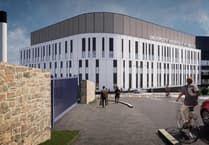New ‘cluster’ areas of COVID-19 cases have emerged in the latest figures released by Public Health Engiand for South East and Mid Cornwall - though with one exception numbers remain very low.
The figures are for the period October 17-23 and a ‘cluster’ is defined as three or more cases of the virus in an area of 750,000 people.
The South East Cornwall area with highest number of cases of the virus in the latest released figures continues to be Kingsand, Antony and Maryfield on the Rame Peninsula, where the total number of people recorded with the virus in the seven days up to October 23 was 38 – a rise of one on the previous figures.
The new South East Cornwall cluster areas are Callington and Pensilva with three cases; St Neot and St Cleer with four cases; Looe and Polperro with three cases; Mid Saltash is again on the COVID map with five cases; and Lanreath, Pelynt and Polruan has also returned to the COVID map with a new cluster of three cases.
Figures for the previously reported cluster areas in South East Cornwall are now: Saltash Latchbrook and St Stephens remaining at five cases; Liskeard still has four cases, as does neighbouring Dobwalls, Addington and Menheniot; Par still has six cases; but in the Lostwithiel and Penwithick cluster area the number of cases has risen by two to eight people with the virus. That is still fewer cases than the 11 recorded there a week or so ago.
In Mid Cornwall, the Bodmin East cluster area has seen a rise of one case to give a total of four people with coronavirus, while in Bodmin West there has been a rise of two cases to make five in total.
In St Austell and Carlyon Bay there has been a rise of one case to give six people with the virus, and there is a new cluster area of three cases in St Austell North and Carclaze, but in the St Austell Central cluster area cases have fallen by one to give a total of three people with the virus.
Meanwhile in Mevagissey and Polgooth the latest figures show the situation there to be unchanged at four cases of people with COVID-19.




